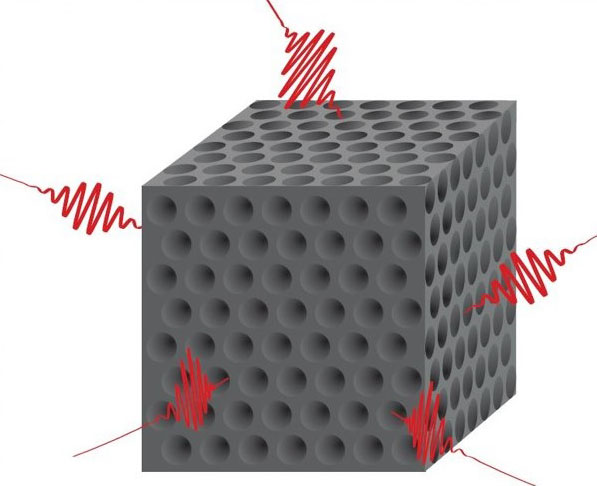11 February 2014
By using photonic crystals, we can highly manipulate light in a profound way. They enable us to 'lock' light or create zones in which it is impossible for light of certain wavelengths to enter. With no alternative to work with, up until recently physicists had to do their calculations using non-existent infinitely large crystals. Researchers of University of Twente's MESA+ research institute have now developed a model which does take the finite size of the crystals into account. By doing so, they are uniting theory and real-life observations. The researchers published their article in the prestigious scientific American journal Physical Review B.
Light is produced by the spontaneous emission of photons ('light particles'). An electron in a material that is in an 'excited state' drops to a lower energy state and emits a photon. For all kinds of applications - such as more efficient LED lamps, lasers and quantum computers – it is useful to be able to control exactly when the material emits photons.
Infinitely large crystals
By using photonic crystals - nanostructures made of materials with different refractive indices, arranged in a regular pattern - we can control the spontaneous emission of photons. In theory, we could, for example, forever lock up photons in an infinitely large crystal. As up until recently there was no appropriate model to make calculations with crystals with finite measures, even though those are the only crystals which actually exist, physicists generally worked with infinitely large crystals.
Theory and practice united
Researchers of University of Twente's MESA+ research institute have now managed to develop a model which does take the finite size of crystals into account. With their model, they make theory and real-life observations attune to each other again. Their research shows, among other things, how the size, position and composition of a photonic crystal can influence the spontaneous emission of photons. This knowledge is important, because there are increasingly more applications for photonic crystals, such as LED lights, lasers, sensors and quantum computers.
Research
The research was conducted by Elahe Yeganegi and FOM working party leaders Ad Lagendijk, Allard Mosk and Willem Vos of the Complex Photonic Systems (COPS) department of University of Twente's MESA+ research institute. The research was financially supported by the Foundation for Fundamental Research on Matter (FOM).













